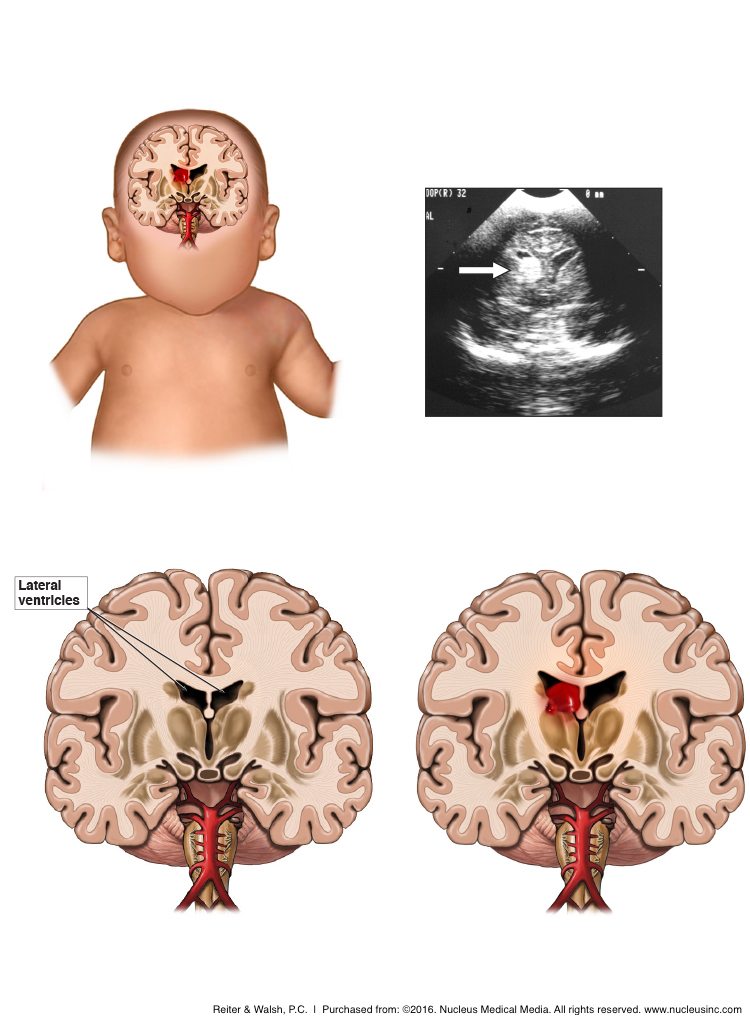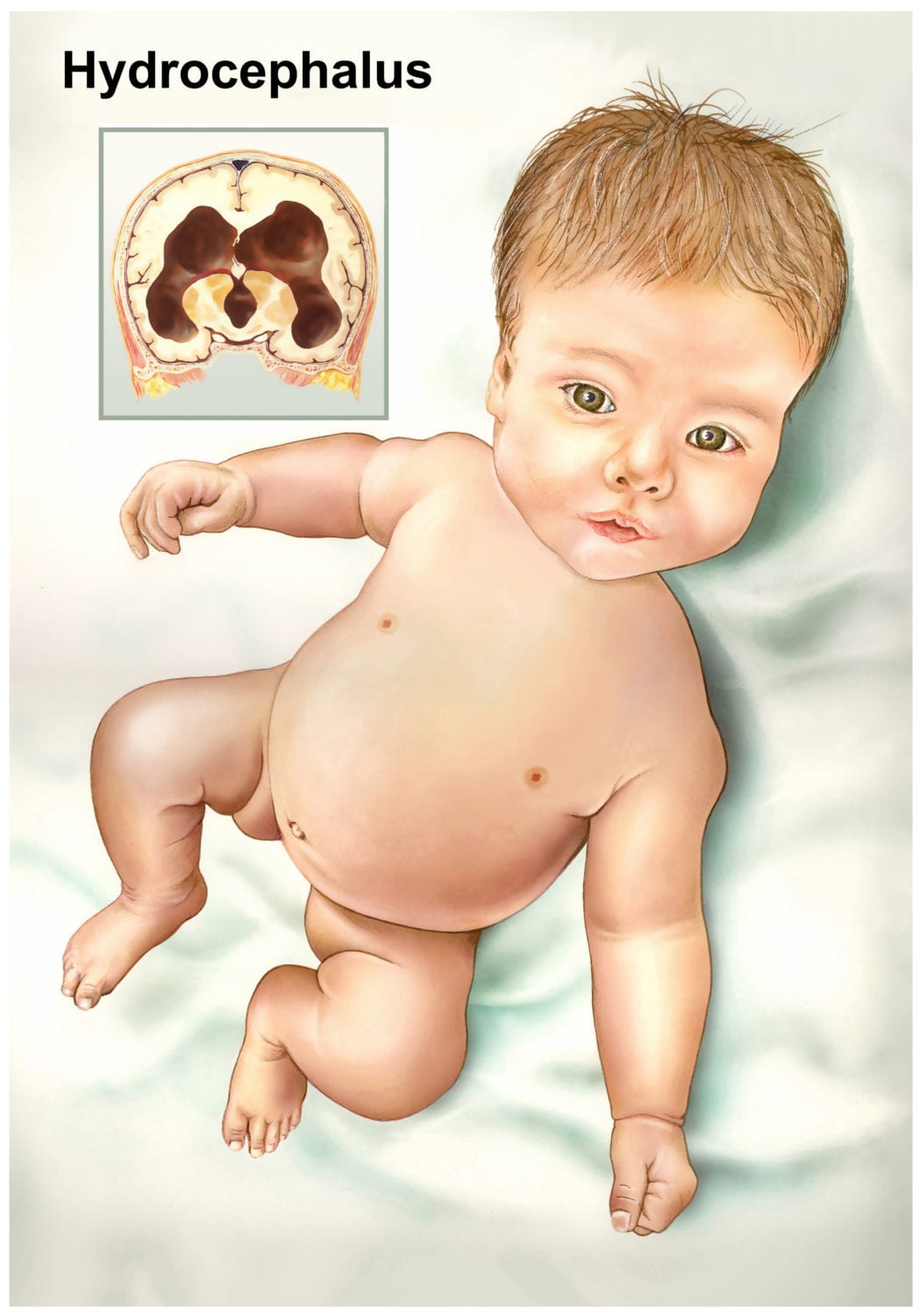What types of infant brain bleeds are there? What causes each type?
An intracranial hemorrhage (brain bleed) is a type of birth injury involving sudden, rapid bleeding within the baby’s skull or brain. Brain bleeds can occur due to trauma during birth or hypoxia (lack of oxygen in the baby’s brain).
Causes and risk factors for brain bleeds vary depending on the type and location of the brain bleed. Some of the more common types of newborn brain bleeds include:
- Subarachnoid Hemorrhage
- Subdural Hemorrhage
- Intraventricular Hemorrhage
- Hydrocephalus
- Subgaleal Hemorrhage
- Cephalohematoma
How Medical Malpractice or Negligence Can Cause Baby Brain Bleeds
Labor and delivery can be a risky endeavor, especially if not managed correctly. Medical staff must adhere to standards of care. Complications during birth must be addressed swiftly, and physicians must closely monitor the mother and baby. If medical professionals do not act in time or fail to treat an emergency during delivery, harm can come to the baby.
Brain bleeds can be caused by birth trauma injuries or lack of oxygen to the baby’s brain. These circumstances can be preventable with appropriate monitoring or delivery by C-section before it’s too late.
If you feel something is wrong with your baby and there was a brain bleed at birth, ABC Law Centers is here for you. We know how difficult it is to have uncertainty about your child’s future, especially while caring for a child after a traumatic birth. Our team is here to answer your questions and investigate your legal options. Calling for a consultation is free. We charge no fees unless we win your case. Dealing with a birth injury diagnosis can be difficult, but our attorneys can help. The ABC Law Centers: Birth Injury Lawyers team focuses exclusively on birth injury and are dedicated to earning justice for families like yours.
![]()
Tell us your story.
Types of Infant Brain Bleeds and Their Causes
Subarachnoid Hemorrhage
 Subarachnoid hemorrhage is the second most commonly detected neonatal brain bleed. This type of brain bleed is caused by the rupture of veins in the space or spaces near the skull.
Subarachnoid hemorrhage is the second most commonly detected neonatal brain bleed. This type of brain bleed is caused by the rupture of veins in the space or spaces near the skull.
Hydrocephalus (fluid in the brain) can develop after a subarachnoid hemorrhage because the bleeding causes too much cerebral spinal fluid to build up in the brain’s ventricles, which can cause brain and head swelling. Subarachnoid hemorrhage can also cause oxygen to be cut off in certain parts of the brain, which can cause brain tissue to die.
Subdural Hemorrhage
Subdural hemorrhage or hematoma, is the most common type of baby brain bleed. SDH occurs when there is a rupture of the blood vessels in the area between the surface of the brain and the thin layer of tissue that separates the brain from the skull. Sometimes subdural hemorrhage causes an increase in pressure inside the brain, which can cause:
- An increase in head size
- Apnea (periods of not breathing)
- Bradycardia (slow heart rate) &
- Coma
Intraventricular Hemorrhage
 The brain has four ventricles in the middle of it. Intraventricular hemorrhage is a type of brain bleed characterized by bleeding inside the brain’s ventricles. Intraventricular hemorrhage is most common in preterm babies, although full term babies can have them. Premature babies are more susceptible to intraventricular hemorrhage because blood vessels and other parts of their brains are fragile.
The brain has four ventricles in the middle of it. Intraventricular hemorrhage is a type of brain bleed characterized by bleeding inside the brain’s ventricles. Intraventricular hemorrhage is most common in preterm babies, although full term babies can have them. Premature babies are more susceptible to intraventricular hemorrhage because blood vessels and other parts of their brains are fragile.
Signs and symptoms of intraventricular hemorrhage include the following:
- Irritability
- Neonatal seizures
- Apnea
- Bulging fontanelle (soft spot)
Intraventricular hemorrhage can be caused by the same factors that cause subarachnoid hemorrhage and subdural hemorrhage. Oxygen deprivation in the baby’s brain (hypoxia) can also cause intraventricular hemorrhages. Hypoxia can lead to other serious brain injuries, such as hypoxic-ischemic encephalopathy.
Hydrocephalus and Germinal Matrix Hemorrhage
 Hydrocephalus is a condition where the baby has excess fluid in the brain. The most common cause of hydrocephalus is a germinal matrix hemorrhage. Germinal matrix hemorrhages occur primarily in premature infants.
Hydrocephalus is a condition where the baby has excess fluid in the brain. The most common cause of hydrocephalus is a germinal matrix hemorrhage. Germinal matrix hemorrhages occur primarily in premature infants.
During 8-23 weeks of gestation, activity peaks in the germinal matrix of the brain. The germinal matrix helps create the fully-formed brain. Cells develop and leave this structure during brain development. Damage to the germinal matrix during weeks 8-23 can cause severe brain damage and death.
A germinal matrix hemorrhage occurs when there is bleeding into the part of the germinal matrix, which is connected to the ventricles. When this occurs, there may be subsequent rupture into the ventricles. When this kind of brain bleed occurs, the ventricles to fill with blood and cellular products. The ventricles dilate, and nearby blood vessels are congested.
Effects from germinal matrix hemorrhages cause a lot of stress on the brain. All of these factors can cause injury to the very important white matter in the brain.
Subgaleal Hemorrhage
 A subgaleal hemorrhage is a potentially deadly type of brain bleed. Subgaleal hemorrhages are strongly associated with:
A subgaleal hemorrhage is a potentially deadly type of brain bleed. Subgaleal hemorrhages are strongly associated with:
- Birth trauma
- Delivery using forceps and
- Delivery using vacuum extractors
Vacuum extraction is the greatest risk factor for a subgaleal hemorrhage. A subgaleal hemorrhage is caused by a rupture of veins that are very close to the scalp. When these veins rupture, blood builds up just beneath the scalp. The baby’s head swells, and the baby shows evidence of shock. Shock is characterized by severely low blood volume and blood pressure.
Medical staff must treat subgaleal hemorrhages promptly and aggressively.
Treatment includes administration of blood products to help increase blood pressure. The sooner treatment occurs, the better the outcome for the baby. Subgaleal hemorrhages can lead to epilepsy, cerebral palsy, severe hearing problems, and death.
Cephalohematoma (Cephalhematoma)
A cephalohematoma (or cephalhematoma) is a brain bleed in which blood collects between the skull and its covering as the result of ruptured vessels. Cephalohematoma is caused by any type of trauma to the baby’s head, but it is most commonly associated with forceps and vacuum extraction delivery. The swelling does not cross suture lines, which are bands of tissue that connect the bones of the skull. Discoloration may or may not be present, and there typically isn’t significant blood loss. If a cephalohematoma is left unresolved, it can cause:
- Calcification of the hematoma
- Cony swelling that can last for months
- Skull deformities in the baby, which often require surgery
- Severe infection in the baby
- Death of parts of the baby’s skull
Legal Help for Infant Brain Bleeds
At ABC Law Centers, we work exclusively with cases involving birth injury. Our team has experience with the circumstances during labor and delivery that can result in infant brain bleeds. We seek justice and lifetime care for children harmed by medical malpractice during birth.
Medical professionals are held to high standards when caring for mothers and their babies during pregnancy, labor & delivery. Any medical error or deviation from medical care standards is considered medical negligence. If your baby suffered a brain bleed, we encourage you to reach out to our birth trauma team for a free legal consultation.
Our birth trauma attorneys help families like yours secure the resources they need to live lives of rehabilitation, well-being, and equal opportunity. Call us now for a free consultation. Our staff is ready to hear your story, answer your questions, and share your legal options.
Tell us your story.
Dealing with a birth injury diagnosis can be difficult, but our attorneys can help. The ABC Law Centers: Birth Injury Lawyers team focuses exclusively on birth injury and are dedicated to earning justice for families like yours.